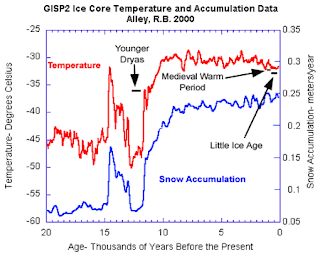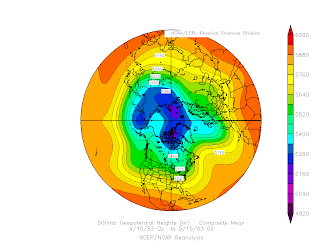 |
| Does this Memorial Day pow put Alta over 800" for the winter? Photo: T. Cruickshank |
The snowfall history on the Alta web page reports a cumulative season snow total of 723.5" since 1 October and 681.5" since 1 November. I believe this is based on twice-daily snowfall observations from the Collins observing site, which is located just above mid-mountain at 9662 feet elevation in Collins Gulch.
Such observations have not, however, been collected at Alta-Collins since 1 May. Thus, we need to be creative to get the total through May.
Fortunately, snowfall observations are also collected at Alta by the Utah Department of Transportation (UDOT) at the so-called guard station across from the base of the ski area at 8700 feet elevation. From 1 Nov - 30 Apr, they recorded 553" of snow, 128.5" (23%) less snow than reported by Alta.
Before you blame this difference on ski-area marketing, I'd like to note that it does make some meteorological sense.
First, the Alta-Collins site is almost 1000 feet higher. That might not sound like much, but based on long-term records collected at the bottom of the Cottonwood Canyons and Alta, the mean annual snowfall in the Wasatch Range increases a bit more than 100"/1000 feet of elevation. That may be a bit high, however, for altitudes above 8500 feet where most of the precipitation falls as snow, but the increase in snowfall with altitude likely explains a significant fraction of the difference between the observing sites.
Second, UDOT's snowfall is based on 24 hour accumulations, which inevitably results in lower snow totals due to settlement. Ideally, snowfall is measured at the time of peak accumulation, but this is simply not practical in most instances. So, the frequency of measurement probably accounts for another chunk of the difference.
So, let's assume the difference between the two sites reflects a combination of meteorological factors and sampling frequency and plod forward. We can now estimate the May snowfall at Alta-Collins by increasing that recorded at the UDOT site (64") by 23%, which gives 79".
If we add that to the 723.5" recorded through May we get a grand total of.................
802.5 inches!!!
There you have it. Now, let the yelling and screaming about whether or not 802.5" has actually fallen at Alta-Collins begin :-).

















































